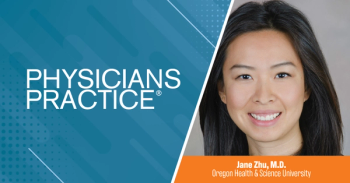
Using natural language processing to improve prepayment reviews
The post-payment review process can be lengthy, cumbersome, administratively inefficient, and result in provider abrasion.
Payers have traditionally relied on post-payment claims reviews to detect, prevent and correct fraud, waste and abuse, accurately facilitate claim payments and reimbursement, and ensure medical necessity of services delivered.
However, the post-payment review process can be lengthy, cumbersome, administratively inefficient, and result in provider abrasion. To overcome the drawbacks associated with post-payment reviews, payers have recently started implementing prepayment claim review programs that allow for prospective claim reviews, in which payers evaluate claims prior to rendering payment to providers.
While prepayment reviews are likely to provide greater savings, faster turnaround times and reduce provider abrasion, performing these audits accurately, consistently, and efficiently requires the utilization of technology that surfaces key information from patient records, enabling payers to determine the medical necessity of services that a patient received.
To this end, clinical natural language processing (NLP) technology has proven particularly valuable in enabling payers to read, extract, and produce clean information from unstructured data buried in the narrative sections of patient records. NLP organizes disparate, unstructured data into a comprehensive, longitudinal, and semantically interoperable patient record that captures all key health information, such as diagnoses, treatments, and care plans.
In addition, accurate claims routing and workflow plays an important role in increasing efficiency of claim reviews in a pre-pay environment. This includes document management, ensuring all pertinent information is present for a determination to be made, and a rules-driven dispatch to ensure claims are routed to an appropriately skilled auditor to optimize productivity.
Say goodbye to “pay-and-chase”
For some payers, the “pay-and-chase” post-payment review process has become deeply ingrained over many years. The process involves reviewing claims after payment, verifying whether the services described in those claims are medically justified for a given patient’s diagnosis, and then attempting to recover funds when overpayment has been identified.
This retrospective form of analysis requires a significant investment in resources for post-payment reviews and overpayment recovery efforts. In addition to the resources required to retrieve documentation from often disparate sources in a timely manner, the “pay-and-chase” process increases provider abrasion by retracting portions of prior payments which results in additional administrative overhead, detracting resources that are otherwise focused on patient care.
While post-payment reviews can negatively impact payer-provider relationships, the industry has found that “pre-submission notification,” a process in which payers alert providers of potential errors before the claim is submitted for payment, can result in goodwill from providers. By enabling providers to file more accurate claims, pre-submission notification helps reduce administrative burdens and lower costs, greatly reducing the negative experiences of providers.
Separately, Medicare administrators have experienced success in moving away from a “pay-and-chase” approach to one that involves more upfront education and technology to predict improper payments. The U.S. Centers for Medicare and Medicaid Services (CMS) in 2021
How NLP helps
In the past, payers have depended on costly and time-consuming chart reviews to find and extract key unstructured data from patient records and claims. In recent years, however, NLP has played an increasingly important part in confirming payment integrity prior to payment.
By giving computers the ability to read, understand, and interpret clinical language, NLP extracts and organizes data from patients’ episodic health records, enabling payers to modernize chart review processes and eliminate antiquated and bloated workflows associated with manually reading a medical record. Leveraging NLP technology in audit workflow tools unlocks the key pieces of data buried in unstructured documents to empower more accurate automation of claims management. Organizing and presenting claim-specific data elements to auditors provides a rapid and efficient path to determination.
A significant advantage of NLP is that chart reviews can be performed just one time to extract all key patient data, as opposed to multiple reviews by multiple clinicians, researchers, or auditors who are all looking for different pieces of information. Further, NLP technology is a key component of interoperability between healthcare information systems, structuring and standardizing health information from a wide variety of sources including claims and patient charts.
In cases when payment integrity is in question, there is often a pattern of repeatability in the data, such as a large number of patients meeting the same prior authorization requirements. NLP helps payers detect these patterns that lack the natural variability found in legitimate patient records before claims are paid.
In the same respect, NLP can help payers spot unusual data that may be representative of fraud, such as expensive tests for which there is no medical necessity. With its ability to accurately analyze unstructured data to identify anomalies within records, NLP can quickly verify the presence, or lack of, substantiating data.
Post-payment claims reviews are a backward-looking process that should largely be confined to the healthcare industry’s past. In contrast, with prepayment reviews that leverage NLP to surface new insights from unstructured patient data, payers can improve the speed and accuracy of claims adjudication while cutting administrative costs. This ultimately improves a payer’s cash flow by saving millions of dollars from leaving the organization in the first place.
Chad Wege is Vice President of Product at SyTrue.
Newsletter
Optimize your practice with the Physicians Practice newsletter, offering management pearls, leadership tips, and business strategies tailored for practice administrators and physicians of any specialty.








